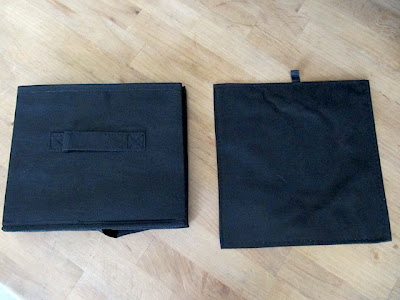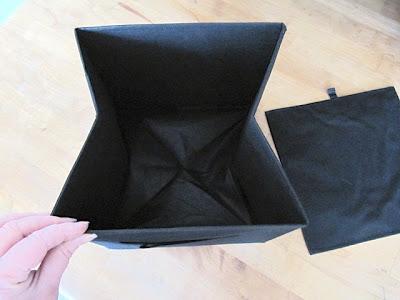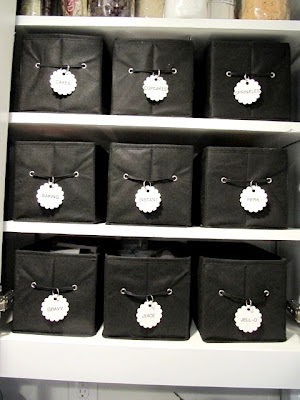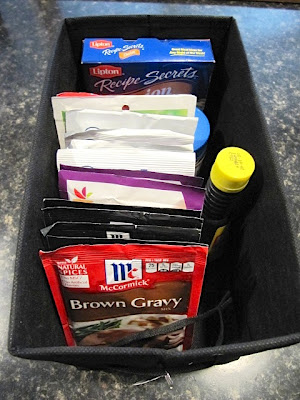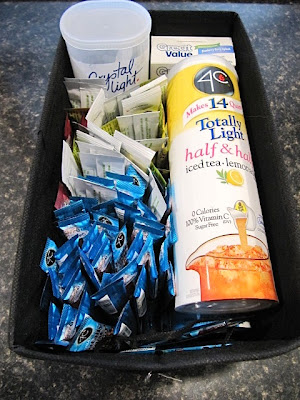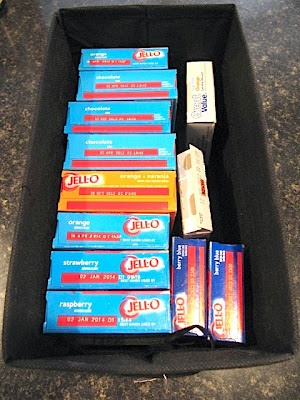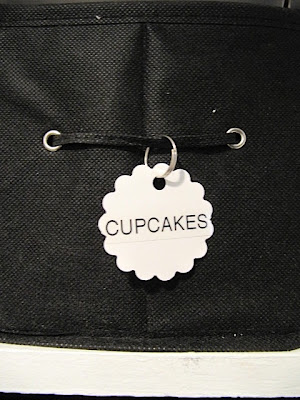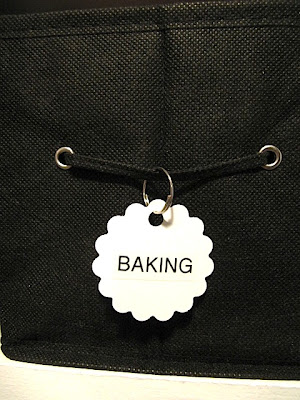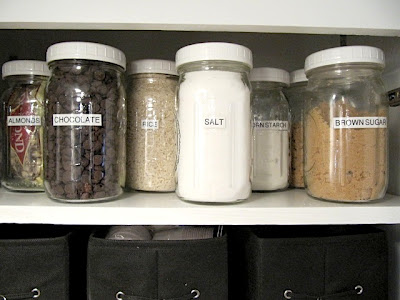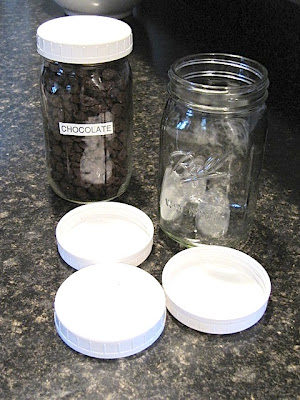Then I found these boxes at the Christmas Tree Shop...a discount store for just about anything. This is the medium square box. The boxes in my kitchen are the small rectangle boxes
The boxes are fabric and come in 2 parts.
The box unfolds and then there is a sturdy bottom liner.
The handles are already on the boxes, so I just added a white card stock label that I cut with a die cutter and attached it with a small key ring from the office supply section of any store.
Here's the breakdown, so you can image what you might put in your boxes.
GRAVY...
All those gravy and soup mix packets that get lost in the shuffle.
JUICE...
Those little tiny juice packets that you add to your water bottles are easy to get to now instead of going into the small boxes to get them. This also contains all the juice mixes in one place.
JELL-O...
Easy to find these small boxes now and to see the flavors too .
CUPCAKES...for all those different sizes and colors of cupcake paper liners.
SPRINKLES...for me this is the place for anything cake decorating...sprinkles, food coloring, tubes for frosting etc.
BAKING...this is baking soda, baking powder, cocoa powder etc.
For ingredients that come in bags, I also use large canning jars with plastic lids to keep things fresh, easy to use and easy to see.
These plastic lids are great instead of using the 2 part metal ring lids.
You can buy these plastic lids wherever canning supplies are sold. I bought mine in Walmart for about $2.00 - $3.00 for a box of 8 lids.
You can use any style or size box that fits your needs and your kitchen cupboard, but I do recommend organizing things into categories. It will make your life so much easier.
Not to mention, you will be able to see what you have at a glance and you won't be buying another can of baking powder when you already had 3 in the back of the cupboard.
Not to mention, you will be able to see what you have at a glance and you won't be buying another can of baking powder when you already had 3 in the back of the cupboard.
Thanks to: http://sewmanyways.blogspot.de/p/about-me.html for this great idea!



